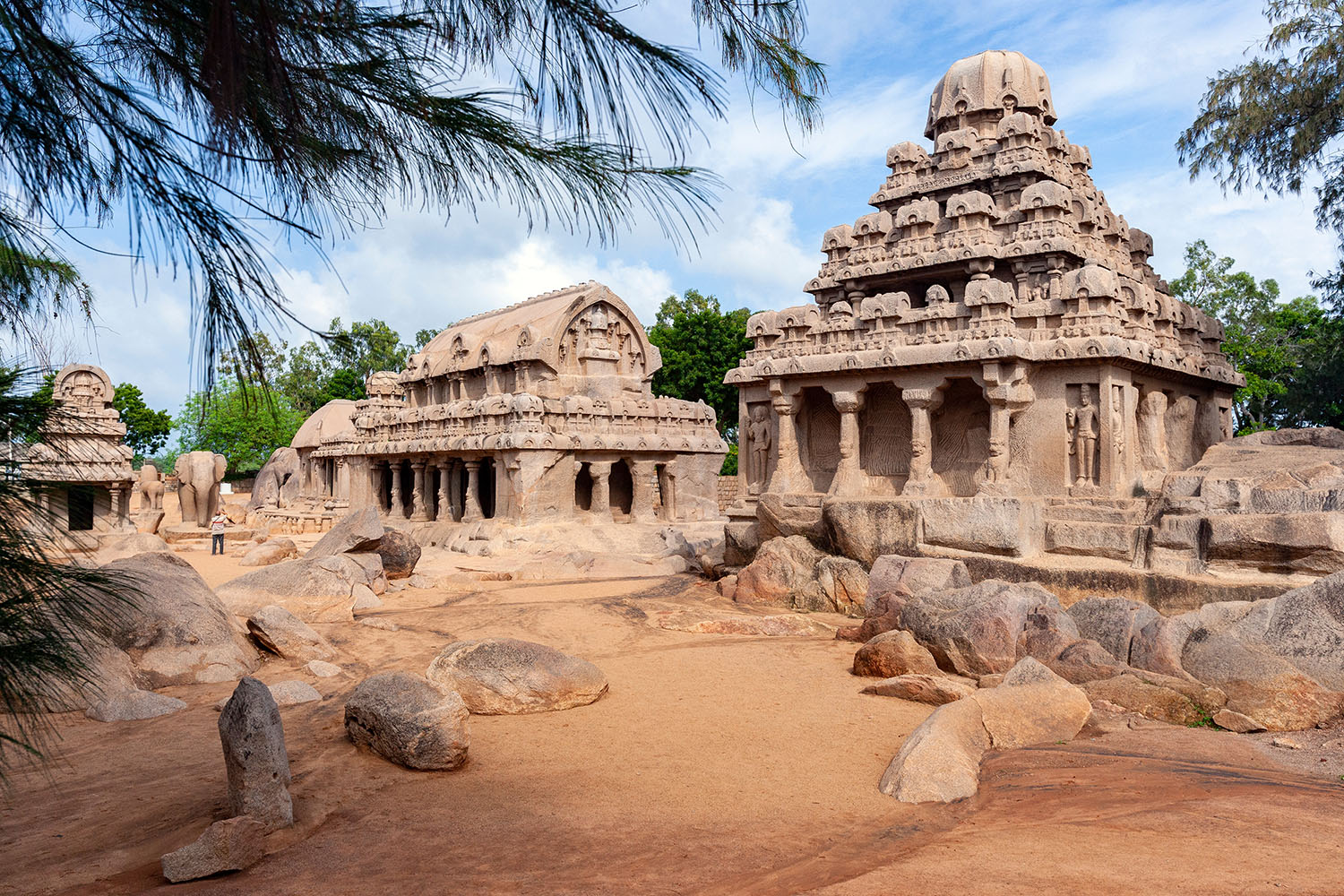ARTICLE
Arjuna Ratha
One among the cluster of Pancha Rathas at Mamallapuram, the Arjuna Ratha is situated next to the northernmost Draupadi Ratha, with which it also shares a low plinth or upapitha. The two-storied structure is west-facing and square in shape, similar in architectural form to the Dharmaraja Ratha with an octogonal dome-like shikhara at the top. It measures 3.4 metres on each side and is 6 metres in height, enclosing a cell 1.3 metres wide and 1.5 metres long.
Each level of the vimana is decorated with dome-shaped, barrel-shaped and dormer-shaped aedicules called kutas, shalas and chandrashalas respectively. Each corner of the structure contains sculptures of dvarapalas. The rear wall in the lower storey has five niches separated by pilasters, while the two side walls have six niches each. The central niche on the southern wall has a carved figure of Shiva leaning on Nandi, while the central niche on the northern wall has a figure of Vishnu. The identity of the male figure in the central niche of the eastern side is disputed, with some scholars interpreting it as Indra riding his elephant and others claiming it is Aiyanar or Sasta, a local god believed in Puranic traditions to be the son of Shiva and Mohini. This niche is flanked by carved mithuna couples.
Though the structure is today named after Arjuna, one of the Pandava brothers from the Mahabharata epic, there is no evidence from its original construction attesting to this.
Bibliography
Our website is currently undergoing maintenance and re-design, due to which we have had to take down some of our bibliographies. While these will be re-published shortly, you can request references for specific articles by writing to hellomapacademy@map-india.org.







